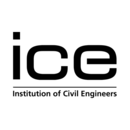Why engineers need to know more about existing infrastructure
Eugen Brühwiler of the Swiss Federal Institute of Technology Lausanne argues in the latest issue of the ICE Engineering History and Heritage journal that civil and structural engineers are too focused on new-build.
Civil and structural engineering is still predominately driven by a desire to design and build new infrastructure. The engineer’s vocation is to start afresh, even when dealing with existing facilities. The general view is that existing facilities have a finite service life of 80 to 100 years and then needs to be replaced by a new construction.
Whereas the mindset was perhaps rational 50 years ago, it is now far from modern society’s demands for built infrastructure. Existing infrastructure is a social asset, and civil and structural engineers are more often called upon to maintain and enhance such assets effectively, within the availability of limited public funds, instead of replacing them with new construction.
The first objective when engineering existing infrastructure is to show that the performance responds to the requirements of modern use with no need for construction intervention. This might seem to be a contradiction for many engineers. Only if this first objective cannot be achieved, and when existing infrastructure shows damage, are construction interventions required.
Modern intervention methods:
However, traditional retrofitting techniques are often laboured and invasive, leading to high intervention costs. Modern intervention methods, involving targeted use of advanced, high-performance materials can lead in many cases to cost-effective engineering solutions with the goal of achieving non-invasive interventions and adding value to existing infrastructure.
Verification of the safety of existing infrastructure must first rely on in-situ measurements of structural behaviour and action effects. This should be complemented by advanced structural analysis such as refined elastic finite-element models for structural behaviour under service conditions and fatigue loading, as well as non-linear models for the determination of ultimate resistance and deformation capacity of structural members.
If interventions on existing infrastructure are necessary, a targeted use of advanced high-performance materials is often effective in enhancing structural behaviour and resistance. Composite materials, such as fibre-reinforced plastics and ultra-high-performance fibre-reinforced cementitious composites and their corresponding technologies, need to be introduced, together with advanced technologies in prestressing or geotechnics.
The ultimate goal is to limit construction intervention to a strict minimum, while providing the structural performance for long and safe service duration for existing infrastructure with low maintenance needs. While this approach aligns with sustainability principles, it represents a fundamental paradigm shift for most civil and structural engineers focused on new build.
Need for broader education:
The main problem is that most civil and structural engineers have little or no education in the engineering of existing infrastructure and have limited awareness of the opportunities available for the effective modern engineering of existing infrastructure.
Civil and structural engineering curricula at most technical universities have remained traditional with little significant updating for more than 50 years, with the core focus on design of new structures in reinforced concrete, steel and maybe timber. In addition, most design classes in such courses are largely based on Eurocodes, which reflect the state-of-art from the end of the last century.
Considering the rather bureaucratic and uninspiring design education of civil and structural engineers, it is not surprising that design engineers are often considered as mere ‘code checkers’. They often have a limited understanding of the broader context of their design solutions and insufficient skills to collaborate with other professionals such as architects and environmental engineers, often coupled with a lack of incentives and motivation. This in turn reduces their perceived value and the fees they can charge.
Novel engineering methods and technologies now need to be fully integrated in the education of civil and structural engineers and within the profession, with the goal of adapting and enhancing existing infrastructure and extending their service duration, thereby adding value.
This article was originally published here by ICE on 21 Dec 2017. It was written by Simon Fullalove.
--The Institution of Civil Engineers
[edit] Related articles on Designing Buildings Wiki
- Articles by ICE on Designing Buildings Wiki.
- Career development for infrastructure leaders.
- Civil engineer.
- Civil engineering course essentials.
- Initial Professional Development for Civil Engineers.
- How to become a civil engineer.
- Refurbishment.
- Structural engineer.
- Structural failures prompt recognition of complex management systems.
- Uncertainty in the civil engineering profession.
IHBC NewsBlog
Old Sarum fire in listed (& disputed) WW1 Hangar - Wiltshire Council has sought legal advice after fire engulfed a listed First World War hangar that was embroiled in a lengthy planning dispute.
UK Antarctic Heritage Trust launches ‘Virtual Visit’ website area
The Trust calls on people to 'Immerse yourself in our heritage – Making Antarctica Accessible'
Southend Council pledge to force Kursaal owners to maintain building
The Council has pledged to use ‘every tool in the toolbox’ if urgent repairs are not carried out.
HE’s Research Magazine publishes a major study of the heritage of England’s suburbs
The article traces the long evolution of an internal programme to research 200 years of suburban growth
IHBC Context 183 Wellbeing and Heritage published
The issue explores issues at the intersection of heritage and wellbeing.
SAVE celebrates 50 years of campaigning 1975-2025
SAVE Britain’s Heritage has announced events across the country to celebrate bringing new life to remarkable buildings.
IHBC Annual School 2025 - Shrewsbury 12-14 June
Themed Heritage in Context – Value: Plan: Change, join in-person or online.
200th Anniversary Celebration of the Modern Railway Planned
The Stockton & Darlington Railway opened on September 27, 1825.
Competence Framework Launched for Sustainability in the Built Environment
The Construction Industry Council (CIC) and the Edge have jointly published the framework.
Historic England Launches Wellbeing Strategy for Heritage
Whether through visiting, volunteering, learning or creative practice, engaging with heritage can strengthen confidence, resilience, hope and social connections.















